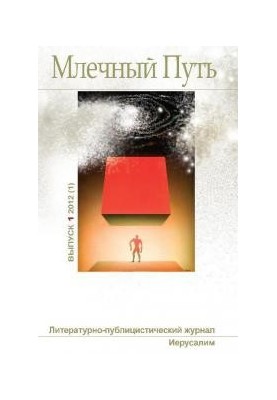Milky Way No1 (1) 2012
 Instant download
Instant download
after payment (24/7)
 Wide range of formats
Wide range of formats
(for all gadgets)
 Full book
Full book
(including for Apple and Android)
It is quite difficult to determine the direction of this publication, since there is in it, in addition to artistic texts and journalism, traditional for literary magazines, also a popular science page. The reader will find here a review of the news of science - "Science on the Internet" The published material not only reports on news in various fields of modern science, but sufficiently details about the achievements and, importantly, the article provides links to specific pages on the Internet, where you can find more detailed information. News of science "on the Internet" is supposed to be published in each issue of the journal In the second issue of “The Milky Way” announced a popular scientific article about the famous mathematician Pimenov Publication in the first issue of Stanislav Lem's essay "Reflections on the Method" (first translated into Russian) also highlights the "Milky Way" from the flow of literary and journalistic journals. Wonderful Polish fiction reflects not only on how he writes it is also far from a trivial view of literary creativity in general. The reader reveals Lem's creative cuisine - it turns out, starting to write "Solaris", Lem puzzled himself with a strange mind and tried to solve it himself throughout the story. Writing the first pages of the future story, Lem did not even imagine what exactly Chris Kelvin found when he flew to the Solaris station. In "Solaris" brilliantly solved his own mystery, but the mystery of strange corpses in the story "Investigation" the writer could not solve, which frankly and admitted in his essay, which was published for the first time (translated by the manuscript) Extremely interesting published in the first issue of “The Milky Way” fantastic story by Edward Mitchell “Professor Schwank’s Experiment” Mitchell's work (1852-1927) is completely unknown to the Russian reader, and meanwhile, having written a dozen science fiction stories throughout his life, Mitchell in each of them opened, in fact, a new direction in fiction. He was the first in ten years before H.G. Wells wrote about a journey into the past by a time machine ("The Clock That Walked Backwards"). Earlier than Wells, American fiction wrote about the invisible man ("Transparent Man"). In the story published in the “Silent Way” for the first time in fiction raised the topic of the transfer of consciousness from one person to another. Mitchell was the first to write about the symbiosis of man and machine (The Man Without a Body), about future computers (The Most Capable Man in the World). "Milky Way" opened for the Russian reader a very interesting author, whose work influenced the development of all Western fiction. Not left unattended by the queen of fiction NF. It is adequately represented by the "main course" of the issue - the story of the editor-in-chief of the magazine Pavel Amnuel "Witness" . Fantastic in the first issue of “The Milky Way” a lot, but it’s still not a science fiction magazine As well as not a popular science journal. Although on the pages of the "Milky Way" there is both fiction and science. “This isn’t a science fiction magazine, although most of the first issue’s lyrics are fiction,” the editorial for the first issue states. - This is not a detective magazine, although we love the classic detective and will publish the best works of this literary direction This is not a mainstream literary magazine, although this trend will certainly find a place in our pages. Realistic works and fiction, detectives and mysticism . Works by Russian-speaking authors and translations. As well as critical materials, essays, reviews, popular science articles and reflections on modern science. The diverse world of modern artistic and popular science literature "in one bottle" - this is how we see our magazine The Milky Way is our literary galaxy in all its diversity of stars large and small, constant and variable, flashing and already extinguished. Magnetic fields of literary biases and galactic literary clusters and currents.
LF/262047987/R
Data sheet
- Name of the Author
- Collective of authors
- Language
- Russian



















